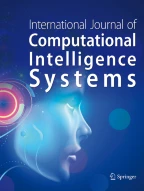Abstract
We are interested in this paper in studying and developing a decision support tool for multi-skill health care tasks scheduling in the Pediatric Emergency Department. We use an evolutionary algorithm and we propose the use of fuzzy logic to formulate an adapted fitness function. We consider the potential performance of the system and we set up a set of lower bounds characterizing criteria limits allowing to calculate the minimum waiting time for incoming patients and the corresponding latest ending time.
Article PDF
Explore related subjects
Discover the latest articles, news and stories from top researchers in related subjects.Avoid common mistakes on your manuscript.
References
Vassy C., 2004. L’organisation des services d’urgence: entre le social et le sanitaire, Mouvements. 32, pp. 67–74.
Stagnara J, Vermont J, Duquesne A, Atayi D, De Chabanolle F, Bellon G., 2004. Urgences pédiatriques et consultations non programmées : enquête auprès de l’ensemble du système de soins de l’agglomération lyonnaise, Archives Pédiatriques, 11, pp. 108–114.
Ellbrant J., Jonas. A, Pia and Karlsland A., 2015. Pediatric Emergency Department Management Benefits From Appropriate Early Redirection of Non-urgent Visits, Pediatric Emergency Care, 31(2), pp. 95–100.
Whitney V., MacNei E., Lindsey N. White, H. James Norton, Alice M. Mitchell, 2014. Frequent Pediatric Emergency Department Use in Infancy and Early Childhood, Pediatric Emergency Care, 30, (10), pp. 710–717.
Pham, Dinh-Nguyen, and Andreas Klinkert. « Surgical case scheduling as a generalized job shop scheduling problem ». European Journal of Operational Research 185.3 (2008): 1011–1025. ScienceDirect. Web.
Bair, A.E., Song, W.T., Chen, Y.-C., Morris, B.A., 2010. The Impact of Inpatient Boarding on PED Efficiency: A Discrete-Event Simulation Study. J. Med. Syst. 34, 919–929.
Pines, Jesse M., Sanjay Iyer, et al. « The Effect of Emergency Department Crowding on Patient Satisfaction for Admitted Patients ». Academic Emergency Medicine: Official Journal of the Society for Academic Emergency Medicine 15.9 (2008): 825–831. Print.
Collis, J., 2010. Adverse effects of overcrowding on patient experience and care. Emerg. Nurse J. RCN Accid. Emerg. Nurs. Assoc. 18, pp. 34–39.
Magid, D.J., Asplin, B.R., Wears, R.L., 2004. The quality gap: searching for the consequences of emergency department crowding. Ann. Emerg. Med. 44, pp. 586–588.
Hwang, U., Richardson, L., Livote, E., Harris, B., Spencer, N., Sean Morrison, R., 2008. Emergency department crowding and decreased quality of pain care.
Bernstein, S.L., Verghese, V., Leung, W., Lunney, A.T., Perez, I., 2003. Development and validation of a new index to measure emergency department crowding. Acad. Emerg. Med. Off. J. Soc. Acad. Emerg. Med. 10, pp. 938–942.
Falvo, T., Grove, L., Stachura, R., Zirkin, W., 2007. The Financial Impact of Ambulance Diversions and Patient Elopements. Acad. Emerg. Med. 14, pp. 58–62.
Sprivulis, P.C., Da Silva J.A ,Jacobs I.G., Frazer A.R.L., Jelinek G.A., 2006. The association between hospital overcrowding and mortality among patients admitted via Western Australian emergency departments. Med. J. Aust. 184, 208–212.
Richardson, L., Livote, E., Harris, B., Spencer, N., Sean Morrison, R., 2008. Emergency department crowding and decreased quality of pain care.
Singer, A.J., Thode Jr, H.C., Viccellio, P., Pines, J.M., 2011. The Association Between Length of Emergency Department Boarding and Mortality. Acad. Emerg. Med. 18, 1324–1329.
ACEP, 2006. Crowding. Ann. Emerg. Med. 47, 585.
Glaa, B., Hammadi, S. and Tahon, C., 2006. Modeling the emergency path handling and emergency department simulation. Dans Proceedings of the IEEE Conference on Systems, Man, and Cybernetics, pp. 4585–4590.
Ernst A.T., Jiang H., Krishnamoorthy M., Sier D., 2004. Staff scheduling and rostering: a review of applications, methods and models, European Journal of Operational Research 153 (1), pp. 3–27.
Winstanley. G, 2004. Distributed and devolved work allocation planning, Applied Artificial Intelligence 18 (2), pp. 97–115.
Saadani, N.., Guinet, A., Chaabane, S., 2006. Ordonnancement des Blocs Opératoires. 6ème Conférence Francoph. « Modélisation Optim. Simul. Systèmes Défis Oppor.» MOSIM’06.
Conforti, D., Guerriero, F., Guido, R., 2010. A multi-objective block scheduling model for the management of surgical operating rooms: New solution approaches via genetic algorithms, in: 2010 IEEE Workshop on Health Care Management (WHCM). Presented at the 2010 IEEE Workshop on Health Care Management (WHCM), pp. 1–5.
Hanset, A., Meskens, N., Duvivier, D., 2010. Using constraint programming to schedule an operating theatre, in: 2010 IEEE Workshop on Health Care Management (WHCM). Presented at the 2010 IEEE Workshop on Health Care Management (WHCM), pp. 1–6.
Ben Bachouch, R., Guinet, A., Hajri-Gabouj, S., 2010. An optimization model for task assignment in home health care, in: Actes sur CD ROM. Venise, Italie, 6 pages.
Daknou A.,Zgaya H., Hammadi S., Hubert H., 2012. Agent based optimization and management of healthcare processes at the emergency department, International Journal of Mathematics and Computers in Simulation, Issue 3, Volume 2, ID number mcs-99.
Davis, L., 1990. “Handbook of Genetic Algorithms”, Van Nostrand Reinhold, New-York, USA.
Sarker. R, Abbas, H.A and Newton, C., 2001. “Solving multiobjective optimization problems using evolutionary algorithm”, Proceedings of CIMCA International Conference, Las Vegas, Nevada, U.S.A.
Portmann, Marie-Claude, et Antony Vignier. « Performances Study on Crossover Operators Keeping Good Schemata for Some Scheduling Problems ». Morgan Kaufmann, 2000. 331–338. hal.inria.fr. Web. 25 sept. 2015.
Michalewicz, Z., 1992. “Genetic Algorithms + Data Structures = Evolution Programs”, Springer Verlag.
Fogel, D.B., 1994. An Introduction to Simulated Evolutionary Optimization. IEEE Transactions on Neural Networks, Vol. 5, N° 1, pp. 3–14.
Author information
Authors and Affiliations
Corresponding author
Rights and permissions
This is an open access article under the CC BY-NC license (http://creativecommons.org/licenses/by-nc/4.0/).
About this article
Cite this article
Othman, S.B., Hammadi, S. A Multi-criteria Optimization Approach to Health Care Tasks Scheduling Under Resources Constraints. Int J Comput Intell Syst 10, 419–439 (2017). https://doi.org/10.2991/ijcis.2017.10.1.29
Received:
Accepted:
Published:
Issue Date:
DOI: https://doi.org/10.2991/ijcis.2017.10.1.29
